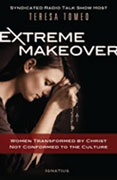Fall 2013 - Episode 7: Year of Faith |
|
|
|
|
|
|
Highlighted Saint
|
St. Hildegard, new doctor of the Church
Feast Day Sept 17th
Abbess: Hildegard was born at Bermersheim, Germany, in 1098.
She was a Benedictine nun and mystic. Abbess from 1136, she
founded several monasteries, including that of Rupersberg,
near Bingen, where she lived a long time and died, in 1179.
She left an enormous library production related to her
visions, as well as commentaries on the Gospels, the rule of
Saint Benedict, and the lives of various saints. Her treatise
Liber Scivias (sci vias Domini: “know the ways of the Lord”) a
collection of revelations, was approved by the pope with the
support of Saint Bernard.
In traditional iconography, she is depicted as a Benedictine
nun writing.
Protector: Esperantists and philologists.
Name: Hildegard is from the German and means “fearless in
battle”.
|
|
|
Janet's Homework Assignment
|
1) Read Benedict’s letter on the Door of Faith
“Porte Fide”
2) Review how you have “learned, lived, and shared the faith.”
3) Visit FOCUS web site
www.focusonline.org
4)
The Faith by Pope Benedict
|
|
|
|
|
|
 |
Extreme Makeover
by Teresa Tomeo
Teresa Tomeo pulls together the latest research on
social behavior and trends to demonstrate that women
are harming themselves and their chances for true
happiness by adopting the thoroughly modern, sexually
liberated lifestyle portrayed in magazines and movies.
Packed with not only persuasive statistics but also
powerful personal testimonies, Extreme Makeover shows
that it is not the slogans of the sexual revolution
and the women’s liberation movement that free and
dignify women, but the beautiful teachings of the
Catholic Church. |
 |
Recall
Abortion: Ending the Abortion Industry's Exploitation
of Women
by Janet Morana
Janet Morana exposes the myriad ways abortion exploits
women, and calls for a National recall of this deadly
procedure.
Sign the petition to recall abortion. |
|
|
|
|
|
 |
The Kitchen Madonna:
Patroness of The
Catholic View for Women
Mary was not only Jesus' Mother, but also a housewife.
Her utensils are earthly and heavenly symbols. The key
represents the safety in the house and also the way
into heaven. The kettle symbolizes nourishment for
body and soul. The broom represents cleanliness in the
home and in thoughts and deeds.
Available from EWTN Religious Catalogue
|
 |

Magnificat is a lavishly printed, easy-to-read
pocket-sized worship aid, of more than 400 pages.
Magnificat can be used to follow the daily Mass and
can also be read at home for personal or family
prayer.
Available at Magnificat |
|
|
Consider praying the Divine Office on a daily basis.
The Divine Office provides psalms and prayers to be
prayed at different times of the day.
See
www.divineoffice.org.
|
|
|
.
|